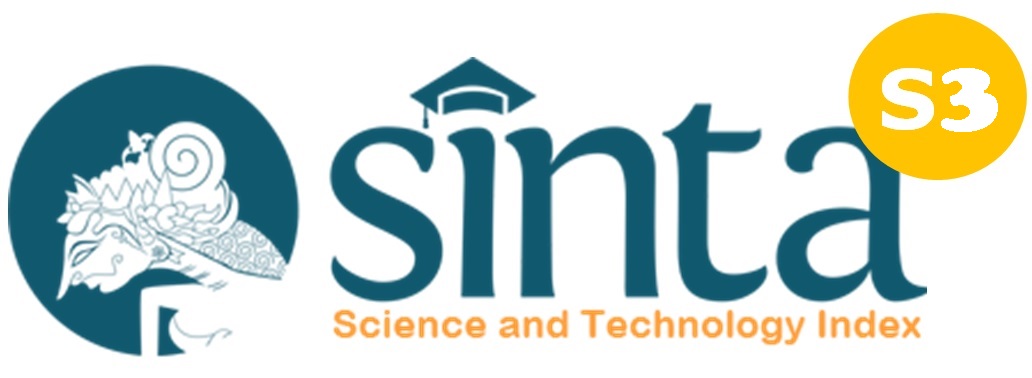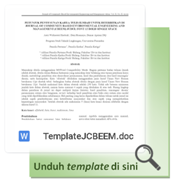The Study of Septic Tank Proximity on Coliform, E. Coli, and Organic Contamination in Shallow Groundwater: a Case Study of DKI Jakarta
DOI:
https://doi.org/10.23969/jcbeem.v9i1.21644Keywords:
Shallow groundwater, Total coliform, Escherechia coli, Septic tank, Geographic Information System (GIS)Abstract
Groundwater in DKI Jakarta is subject to microbiological contamination. Approximately 32% of the population in DKI Jakarta relies on groundwater as an alternative source of clean water, highlighting the urgent need to address and prevent contamination. This study aims to investigate the effect of the separation distance between septic tanks and wells on the levels of Total coliform (TC), Escherichia coli (EC), and organic parameter contamination in shallow groundwater. Groundwater quality data, including TC, EC, and organic parameters from 265 monitoring points in DKI Jakarta, was obtained from the Jakarta Environment Agency in 2022. A quantitative descriptive approach, incorporating spatial mapping of bacterial and organic contamination using Geographic Information System (GIS) tools, was employed. MANOVA analysis using SPSS 26 was conducted to determine the relationship between septic tank distances and shallow water contamination levels. Results indicate that the separation distance between septic tanks and wells significantly influences TC and EC contamination in Jakarta Pusat, Jakarta Timur, and Jakarta Barat. Organic contamination, however, is significantly affected only in Jakarta Pusat and Jakarta Timur. In contrast, Jakarta Utara was identified as the most contaminated region, with 84% of groundwater samples showing TC contamination, 55% exhibiting Escherichia coli (EC) contamination, and 69% affected by organic pollution. However, these contaminations were not proven to be influenced by the proximity of septic tanks. This is likely due to the area's coastal location, where hydrogeological conditions and diverse pollution sources play a more significant role in groundwater contamination. Improvements in sanitation infrastructure could significantly enhance groundwater quality, particularly in highly vulnerable areas such as Jakarta Utara.
Downloads
References
Bidang Pengendalian Dampak Lingkungan, D. L. H., & Jakarta, P. D. (2022). Laporan Akhir Pemantauan Air Tanah DKI Jakarta, Tahun 2022. https://lingkunganhidup.jakarta.go.id/files/laporan/Laporan_Akhir_Pemantauan_Air_Tanah2022.pdf
Bouderbala, A. (2019). Human impact of septic tank effluent on groundwater quality in the rural area of ain soltane (ain defla), algieria. Environmental and Socio-Economic Studies, 7(2), 1–9. https://doi.org/10.2478/environ-2019-0007
Ferrer, N., Folch, A., Masó, G., Sanchez, S., & Sanchez-Vila, X. (2020). What are the main factors influencing the presence of faecal bacteria pollution in groundwater systems in developing countries? Journal of Contaminant Hydrology, 228(November 2019), 103556. https://doi.org/10.1016/j.jconhyd.2019.103556
Kairunnisa, D., Hendrawan, D. I., Fachrul, M. F., & Rinanti, A. (2021). Distribution pattern of e. coli and total coliform at Tanah Sareal District, Bogor City, Indonesia. IOP Conference Series: Earth and Environmental Science, 802(1). https://doi.org/10.1088/1755-1315/802/1/012030
Kementerian Kesehatan. (2023). Permenkes No. 2 Tahun 2023. Kemenkes Republik Indonesia, 55, 1–175.
Mapili, K., Rhoads, W. J., Coughter, M., Pieper, K. J., Edwards, M. A., & Pruden, A. (2022). Occurrence of opportunistic pathogens in private wells after major flooding events: a four state molecular survey. Science of The Total Environment, 826(153901.).
Mester, T., Szabó, G., Sajtos, Z., Baranyai, E., Kiss, E., & Balla, D. (2023). Assessment of Groundwater Decontamination Processes around a Dismantled Septic Tank Using GIS and Statistical Analysis. Water (Switzerland), 15(5). https://doi.org/10.3390/w15050884
Naily, W., Sunardi, S., Asdak, C., Dida, E. N., & Hendarmawan, H. (2023). Distribution of Escherichia coli and coliform in groundwater at Leuwigajah and Pasirkoja Areas, West Java, Indonesia. IOP Conference Series: Earth and Environmental Science, 1201(1). https://doi.org/10.1088/1755-1315/1201/1/012105
Olalemi, A. O., Ige, O. M., James, G. A., Obasoro, F. I., Okoko, F. O., & Ogunleye, C. O. (2021). Detection of enteric bacteria in t w o groundwater sources a n d associated microbial health risks. Journal of Water and Health, 19(2), 322–335. https://doi.org/10.2166/wh.2021.212
Reay, W. G. (2004). Septic tank impacts on ground water quality and nearshore sediment nutrient flux. Ground Water, 42(7), 1079–1089. https://doi.org/10.1111/j.17456584.2004.tb02645.x
Samsuhadi, S. (2018). Pemanfaatan Air Tanah Jakarta. Jurnal Air Indonesia, 5(1). https://doi.org/10.29122/jai.v5i1.2428
Sekgobela, J. M., Khabo-Mmekoa, C. M., & Momba, M. N. B. (2024). Tracking enteric pathogen contamination from on-site sanitation facilities to groundwater in selected rural areas of Vhembe District Municipality, Limpopo Province, South Africa. Heliyon, 10(5), e27271. https://doi.org/10.1016/j.heliyon.2024.e27271
Stall, C., Amoozegar, A., Lindbo, D., Graves, A., & Rashash, D. (2014). Transport of E. coli in a sandy soil as impacted by depth to water table. Journal of Environmental Health, 76(6), 92–101.
Weaver, L., Sinton, L. W., Pang, L., Dann, R., & Close, M. (2013). Transport of microbial tracers in clean and organically contaminated silica sand in laboratory columns compared with their transport in the field. Science of the Total Environment, 443, 55–64. https://doi.org/10.1016/j.scitotenv.2012.09.09
Yates, M. V. (2011). On-Site Wastewater Treatment (pp. 256–263).














